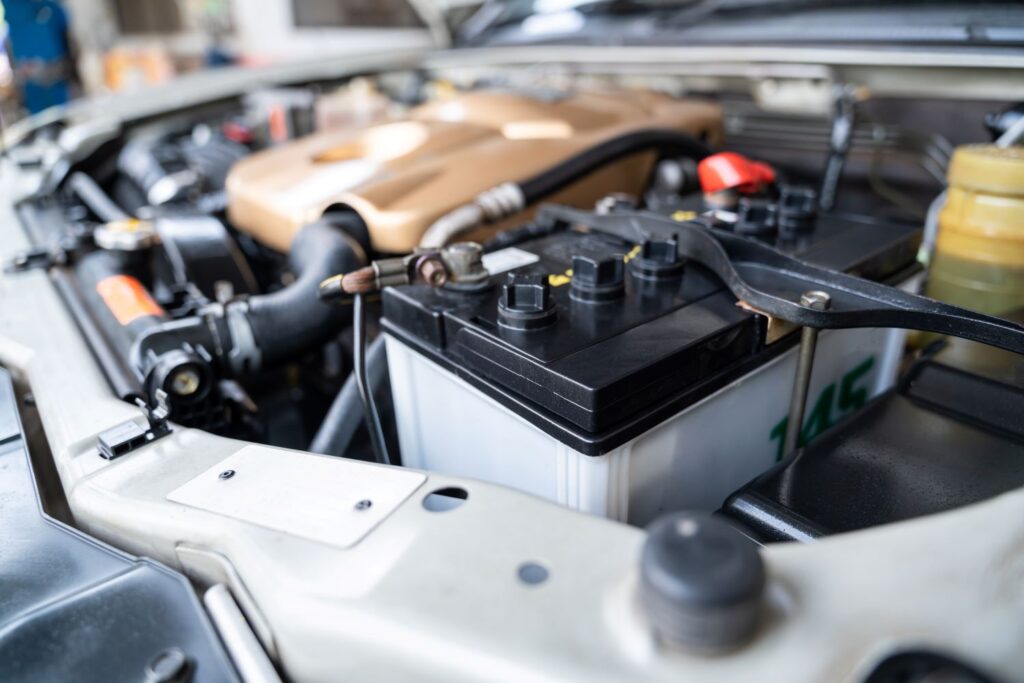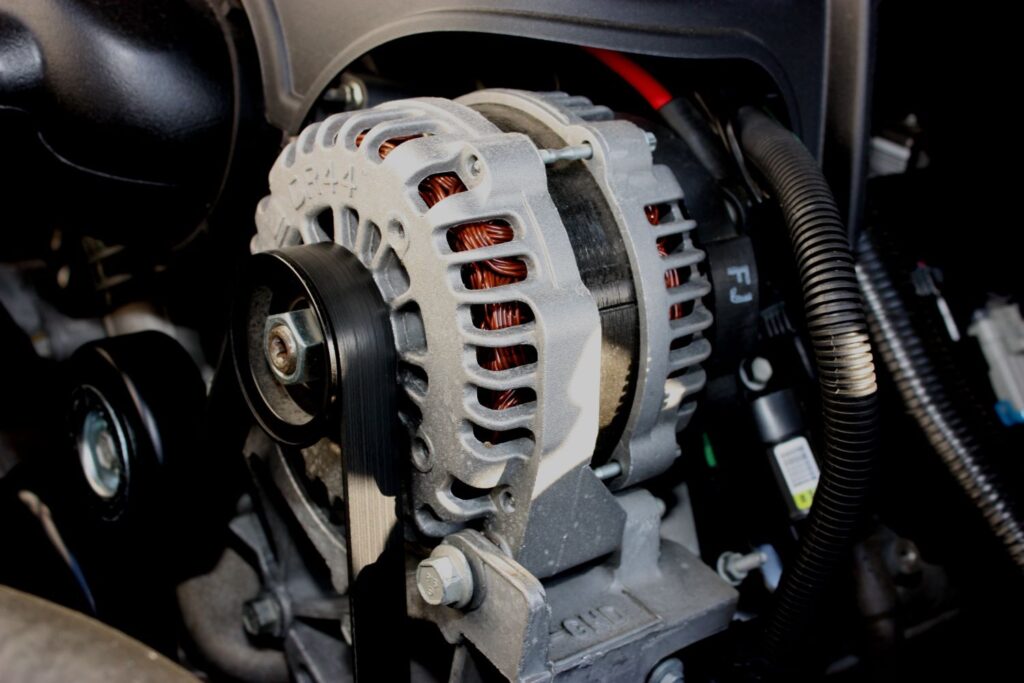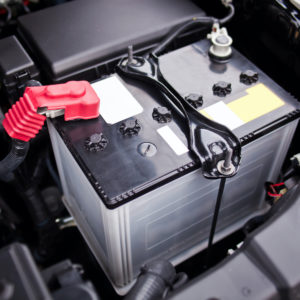The car battery usually lasts at least several years before it begins to flag. However, various factors can make it fail earlier than expected. When the battery stops working without warning, you won’t be able to start your car’s engine unless you replace it or get a jump start.
Fortunately, there are steps you can take to help your car battery last longer.
How Long Should My Car Battery Last?
There are different levels in car batteries when it comes to how long they last. Many last between three and five years, but they can wear out faster or last longer based on various factors.
The battery’s type is perhaps the most influential factor in its lifespan. Some types last longer than others thanks to improvements in their materials and construction.
Listed below are the most common battery types, a short description, and their expected lifespans:

Flooded Lead-Acid Batteries
The flooded lead-acid battery is one of the oldest battery types. Its cost-effectiveness and reliability make it very common, but the lead-acid solution depletes over time. If the battery has a cap, you can open it and pour distilled water to replenish the solution. But if the part doesn’t have a serviceable cover, you must replace it.
Unfortunately, the flooded battery also has the shortest service life among the battery types. It delivers brief surges of voltage required to fire up the engine, a process that wears it out faster than other batteries.
The typical flooded lead-acid battery lasts between three to five years. You can expect roughly 30,000 starts from a flooded battery before you need to replace it.
Sealed Lead-Acid Batteries
Sealed lead-acid batteries use the same operating principles as flooded batteries. Completely sealed to reduce gas leaks and prevent spillage, they suit off-road vehicles like Jeeps and SUVs that often traverse uneven terrain.
Most sealed lead-acid batteries also run for three to five years, just like traditional flooded batteries.
Absorbent Glass Mat (AGM) Batteries
The AGM battery gets its name from the glass mats it uses instead of the lead plates in lead-acid batteries. It works by absorbing electrolytes and keeping the latter in a solid state.
AGM batteries need a battery charger designed to recharge the type. Always check a charger’s compatibility with an AGM-type battery.
The typical AGM battery has a lifespan of roughly seven years. It can last as long as three flooded or sealed lead-acid batteries. Its longevity and superior performance make it suitable for use in cars with start-stop technology that automatically turn the engine off and on while idling to save fuel.
Lithium-Ion (Li-On) Batteries
Most electric vehicles (EVs) run on lithium-ion batteries. Also called lithium batteries and li-on batteries, they can store and release way more power than lead-acid or AGM batteries.
A typical lithium-ion battery can last from eight to 20 years. It can power your EV for 100,000 to 200,000 miles before it needs replacement. However, extreme temperatures can cut that prolonged lifespan short.

What Affects Average Car Battery Life?
The car battery doesn’t operate in a vacuum. While its type sets the device’s expected lifespan, other factors can wear the battery down until it fails earlier than it should
Here is a list of factors that can shorten the average car battery life:
Alternator Problems
The battery cannot replenish itself. Instead, it receives current from the alternator.
A faulty alternator might not deliver sufficient voltage to the depleted battery. If the battery’s voltage drops below a certain level, it becomes discharged.
You cannot charge a discharged battery even if you replace the bad alternator with a new one. If you force the issue, you risk damaging the alternator.
Similarly, a jump start will only provide a temporary charge and might not work the next time. You must replace the discharged battery with a new one immediately.
Extreme Temperatures
Do you live in a very hot or cold state? Extreme temperatures can shorten your car battery’s lifespan.
Extreme heat will effectively cook the car battery inside the engine bay. Meanwhile, extreme cold reduces the battery’s ability to produce power, forcing the device to work harder.
High temperatures will wear the car battery down faster than low temperatures. However, both extremes bode ill for your vehicle, so avoid extensive exposure to either.
Corrosion and Rust
The car battery’s terminals usually accumulate rust over time. They’re made of metal and get exposed to liquid electrolytes. If you regularly clean them and keep corrosion to a minimum, the battery will run fine.
However, too much corrosion interferes with the current flow through the battery terminals. If that happens, the battery cannot supply the engine with power. Likewise, the charging current from the alternator might not reach the battery.
Driving Habits
Believe it or not, your driving habits can make or break the car battery. Specifically, the battery won’t last as long as it should if you don’t drive enough.
As mentioned earlier, the alternator charges the battery. But what powers the charging device in turn? The engine does.
So what does this mean? The alternator can only charge the car battery while you drive. If the engine doesn’t run, neither does the alternator.
Furthermore, the alternator requires an intact belt for operation. If the alternator belt breaks or develops a problem, the alternator itself won’t run.
Furthermore, the alternator doesn’t instantly top off the battery. Charging requires time. That means the engine must run throughout the charging process.
If you drive infrequently and briefly, the alternator doesn’t get enough time to charge the battery. The battery will continue to drain until it discharges.
Leaving the Power On When the Ignition Is Off
Anyone can make the mistake of leaving one of your vehicle’s lights or another electrical part running overnight, and this is bad for the car battery.
If you turn the engine off but leave an electrical part running, the component will draw power from the battery. Leaving the part on long enough might drain the battery enough to cause a discharge.

How to Make the Car Battery Last Longer
Here are some steps you can take to help your car battery reach its expected lifespan:
Refill Lead-Acid Batteries
Flooded lead-acid batteries contain a liquid electrolyte. Over time, the electrolyte gets depleted. If the electrolyte level drops too low, the battery will fail.
To prevent this, you must regularly refill the flooded battery. Don protective garments to avoid exposing your face and hands to the harsh electrolyte solution. Open one of the caps and carefully pour distilled or deionized water into the car battery.
Refill your car’s flooded lead-acid battery at least once a month. If you often drive long distances, make this a weekly habit.
Watch for Corrosion
Keep the car battery clean and free of rust. Every six months, inspect the battery’s terminals and other metal parts. If you come across any signs of corrosion, remove it immediately.
Drive Longer and More Often
Hop into your car and take longer trips more often. Try to drive for at least 30 minutes once a week. The longer the engine runs, the more time it gives the alternator to charge the battery.
Be More Careful
Always turn the power off before shutting the engine down. Check the lights and other electrical parts to make sure they have been shut down. Make sure not to leave the key in the ignition.
How Much Does A New Car Battery Cost?
If you’re planning to get a new car battery, get ready to pay anywhere between $130 and $530 for a quality replacement part. The exact price of the car battery varies according to factors like the product’s brand and your vehicle’s make and model.
Where to Get a New Battery for Your Vehicle
A car battery that’s run its course won’t generate enough power for components to run efficiently. At worst, it won’t be able to provide the needed spark to start your vehicle altogether. As such, don’t put off replacing your dead battery. Shop online at CarParts.com, and get your replacement in as fast as two business days.
With only a few clicks, you can find the right battery for your ride on our website. Filtering our catalog to show the batteries that fit your ride and have the specs you need is as easy as filling out our vehicle selector and adjusting the search filters.
Our car batteries are all available at competitive prices, so you’re sure to find one that fits your budget. Don’t worry about quality. Our batteries passed the highest quality control standards from industry professionals.
Don’t let your daily driver gather dust in the garage because of a dead battery. Order high-quality battery replacement from CarParts.com today.
Any information provided on this Website is for informational purposes only and is not intended to replace consultation with a professional mechanic. The accuracy and timeliness of the information may change from the time of publication.






























